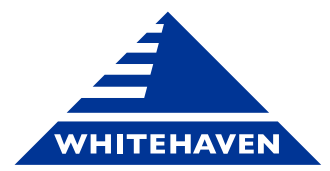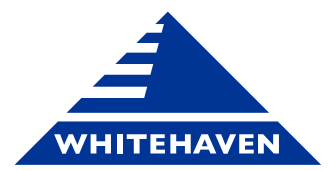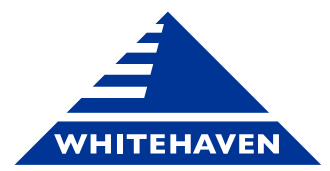Compliance Audit
Equipment Owner Information
-
Company
-
Phone Number
-
Email Address
Equipment Information
-
Make
-
Model
-
Year
-
Equipment Type
-
ID/ Call Sign
-
Registration Number
-
Serial Number/ VIN
Inspector Information
-
Name
-
Company
-
Date of Inspection
-
Signature
Compliance Audit
-
Is the equipment clean and tidy?
-
What is the equipment body condition? Is the body integrity compromised through damage, oxidisation, age and/or<br>general wear and tear.
-
Are there any equipment modifications and/or attachments evident?
-
All emergency stops are clearly identified?
-
Are all controls, levers and switches labelled correctly?
-
Is the lockable isolation point/s identified?
-
Are all fire suppression activation points clearly identified?
-
Fire extinguisher location labels are fitted?
-
Is appropriate warning signage installed? (hot, working at heights, 3 points of contact etc.)*
-
Is mandatory PPE and safety signage installed? (hard hat, hearing, eye, boots, first aid, 3 points of contact etc.)* Mandatory is defined as "must at all times" and not just when the equipment is operational so care must be taken when utilising mandatory signage.
-
The fuel tank has content labelling?
-
The hydraulic tank has content labelling?
-
The air receiver tank has content labelling?
-
Are water tank contents clearly labelled and contain labelling for non-potable water?*
-
All control panel gauges are intact, clear and operable?
-
Are all working at heights anchor points & static line labelling (Including name of installer, installation date, name of certifier, certification date, highest purpose, maximum number of people, as per AS 1891.1) fitted?*
-
All relevant equipment has rated capacity labelling (WLL etc.)?*
-
There are equipment identification labels on sides and rear of equipment (reflective sign or letters as per site size requirements)?*<br>
-
All gauges are intact, clear and operable?
-
Are all controls, levers and switches operable and in good condition?
-
How is the cleanliness of the engine compartment?
-
Are there any hydrocarbon leaks?
-
What is the condition of the cooling system? (Radiator, water pump, coolant leaks, hose condition / clamps, fan, guarding, radiator cap has a manually operated pressure relief valve with overflow tube fitted)*
-
What is the condition of the oil cooler? (required guarding, oil leaks, fan, hydraulic motor, belts, mounts, cleanliness)
-
What is the condition of all belts? (adjustment, cracks)
-
What is the condition of the exhaust manifold/piping/muffler? (leaks, security, free from debris, easily accessed areas are lagged/guarded)
-
What is the condition of the Turbo? (cover, shielding, leaks, security)
-
What is the general engine condition? (rotating parts guarded to Australian Standards)
-
What is the condition of the engine mounts? (security, cracks)
-
What is the condition of the wiring & air lines? (routing, separation, security)
-
What is the condition of the starter motor? (connections, mounting)
-
What is the condition of the alternator? (adequate guarding, mounting)
-
What is the condition of all hydraulic pumps & drives? (secure mounting and required guarding, shafts / couplings in good condition)
-
What is the condition of all work lights? (test function, are there adequate lights for night operation)*
-
Are there three emergency shutdown points? (accessible from the ground, test function, accessibility risk assessed, preferably at rear, LHS & RHS)*
-
Is an approved lockable isolator/s installed that meets AS4871? (test function)*
-
Are warning alarms/lights fitted and operational? - (low oil pressure, mast raise/lower, rod handler and specific equipment operational alarms etc.)
-
Are there suitable circuit Breakers/fuses on the electrical system? (added accessories protected)
-
Is all wiring appropriate? (routing for protection against vibration, chafing, heat & corrosion)*
-
What is the condition of all batteries? (security, terminals for corrosion, cable condition, terminal covers and/or non-conductive insulation on inside of battery cover)*
-
Is an operational amber rotating beacon fitted?*
-
The fire suppression system is PFAS free and contents clearly labelled Fluorine Free Foam?
- Compliant
- Non-Compliant
- N/A
-
The fire suppression system is as per AS and appropriate for the equipment? (fitted with pressure gauges in the green, test tags fitted and in date (6 monthly inspection,1 yearly service, Reservoir <10 years old)*<br>
-
The condition and placement of the fire suppression activation points are appropriate for the equipment? (three fire suppression activation points to be risk assessed, preferably one on each side of equipment and one located on control panel or in close proximity, fire suppression system is operable from ground level and operator cabin and anti-tamper seals/pull pins do not impede rapid and safe initiation of the manual activation system)<br>
-
The condition and placement of the fire extinguishers are appropriate for the equipment? (2 x 9 kg mounted dry chemical extinguishers with pressure gauge in the green, test tags present, 6 monthly inspection, extinguishers easily accessible, free from obstruction and mounting brackets in good condition)*
-
Are there any hydrocarbon leaks?
-
What is the condition of all hosing and piping? (routing, security, mounting, leaks)
-
What is the condition of the receiver tank mounting? (receiver tank is free of signs of damage, corrosion or rust, receiver element cover security is intact)
-
Are the receiver documentation records available? (Plant registration, design and inspection certificates, MDR and housing stamped)<br>
-
What is the condition of the pressure relief valves (PRV)? (tamper proof intact, valves in good condition, current inspection report < 2 year interval, identification plate corresponds to inspection record, PRV’s face away from work areas)*<br>
-
What is the condition of the blow down silencers? (Included running blow down and rod string dump)
-
Does all auxiliary air meet requirements? (regulated, downward facing connections - 45˚/ 90˚, condition of supply hose & fittings)*
-
Is there a sight glass on the scavenger line? (fitted, easily accessible, clear, operational)*
-
The equipment has a high temperature shut down system fitted to the dry side of the compressor? (maintained, inspected/tested, operational)*
-
Is there an intermediate stage pressure gauge fitted? (installed and operable, gauge mounted and clearly visible on either the Driller's control panel or the equipment itself)
-
Are all hose restraint anchor points fit for purpose? (engineer designed/sign off, 4 part bow shackles, no daisy chaining)<br>
-
Are suitable hose restraints fitted to all relevant hoses? (double leg design, full length on travelling hoses and booster/auxiliary units, approved engineered guards on short hoses, undamaged),<br>
-
What is the compressor general condition? (if separately driven, rig emergency shut downs include compressor)<br>
-
Are any hydrocarbon leaks evident?
-
What is the condition of the discharge hoses? (correct rating, damage, splits)
-
What is the security/condition of flange bolts & hose clamps?
-
All rotating equipment is guarded as per Australian Standard 4024?
-
Are all pressure relief valves & outlets facing down and in date? (Relief valve <6 months old, tested and documented)*
-
Pump has a fit for purpose hand-piece (fixed pressure, auto off) for washing/cleaning?*
-
All accumulator certificates are available?
-
What is the mast structure condition? (cracks, damage, loose/missing bolts)
-
Are all mast attachments secondary retained? (secondary retention on all attachments above head height, redundant equipment removed)<br>
-
What is the general mast condition? (remote grease lines, sheaves, pulleys etc.)*
-
What is the condition of Working at Heights equipment including the anchor points?
-
All working at Height equipment has current certification?
-
What is the condition of the mast dump cylinder/slides (wear, leaks, security, pivots, pin)
-
What is the condition of the feed cylinder/s? (leaks, security, condition of pins)
-
What is the condition of all pull back/pull down ropes/chains? (wear, condition, termination of ropes, stretch, double lock nuts on adjusters, correctly tensioned)*
-
What is the condition of all sheaves & travelling sheave blocks, sprockets and/or sheaves? (adequate guarding)
-
What is the condition of all winch/wire lines? (no flat spots, no kinks, no obvious damage to hooks, eye thimble fitted, hooks & shackles rated, hook safety latch, termination of rope)*
-
What is the condition of all winch assemblies? (leaks, sheaves, security)*
-
Are main winch & wire line limiters fitted? (test function)*
-
Winch boom has an effective anti-collision system installed and operational? This must ensure that the winch boom cannot be impacted by or impact the rotation head.
-
What is the condition of the winch boom? (sheaves, winch, mount, hydraulic cylinders, leaks, hosing, lubrication, grease nipples, pin security, no c-clips)<br>
-
What is the condition of the slips table assembly? (cracks, rod slip inserts, guarding)
-
What is the condition of the foot clamp assembly? (cracks, rod slip inserts, guarding)
-
What is the condition of the condition of the multi sized rod spinner? (mounts, general condition, hosing, leaks)
-
What is the condition of the travelling hoses? (condition of hose chain/hose reel & bulk head). The travelling air/bull hose is to have a full length hose restraint fitted along its entirety.
-
Rotation Head has an effective anti-collision system installed and operational? This must ensure that the rotation head cannot impact the rotation guard, rod<br>retention system, any other parts of the structure itself or any additional tooling on the mast.
-
What is the condition of the rotation head ? (leaks-spindle, hydraulic hoses, remote grease lines, alignment with centre of table)<br>
-
What is the condition of the rod cradle/plug slide? (mounts, pivots, damage)
-
Is there an operational rod retention system fitted? (mounts, pivots, condition, security, collision avoidance system)
-
What is the condition of the rotation guard? (when activated, results in a zero energy state for rotation, traverse and all other ancillary equipment within and on the mast structure itself, condition, compliant with AS4024)
-
Is there a hydraulic hands-free breakout system fitted to the equipment? (The requirement for this system is to be completely hands free, not partially hands-free)
-
What is the condition of the hydraulic hands-free breakout system? (leaks, approved breakout system)
-
Is a rod handler fitted and operational?
-
Rod handler has an effective anti-collision system installed and operational? This must ensure that the handler cannot be impacted by or impact the rotation head.
-
Is there a mercury/tilt/limit switch fitted to the rod handler? This switch must limit the ability for the jaws/claw on cup type handlers to activate when the handler is above 15 degrees from its horizontal plane.
-
Is there a protection circuit/system on dual jaw type rod handlers to ensure jaws/clamps cannot be inadvertently opened during operation and/or during a equipment failure?
-
What is the condition of the rod handler (correct operation, approved visual/audible confirmation system, condition of mounting, boom, hydraulic cylinders & hoses, chain condition and tension)
-
If the wire-line system is limited for special Geophysical operations (speed limited ~10m/min, visual depth measurement), ensure correct operation.
-
What is the condition of the mast pivot frame? (cracks, damage, loose/missing bolts, security)
-
What is the condition of the mast pivot bushes? (excessive play/wear, pin retainers, cracks, grease nipples)
-
What is the condition of the angle attachments and mast lock? (condition, leaks, cylinders, approved visual/audible confirmation system, hands free installation and removal)*
-
What is the condition of the mast raise cylinders? (pivots, mounts, pins, keeper plates, leaks, over centre valves)*
-
Driller’s overhead protection is present? (rated with plaque/stamped, approved)*
-
What is the condition of all the hydraulic jacks? (hold weight of rig, leaks, over centre valves, foot plates, pins in good condition)*<br>
-
Does the Rod box/bin have either a lockable gate or a safe way of retaining on-board drill pipe so that it is unable to move when travelling? (check it is effective)*
-
What is the condition of the Chassis after a visual inspection? (loose or missing bolts, cracks, damage, rust)
-
What is the condition of the rig to chassis mounts? (secure, loose/broken bolts/nuts/welds)
-
What is the condition of the fuel system? (tank, secure cap, leaks, lines, routing)
-
What is the condition of all Working at Heights Tagging /Condition / Storage? (two sets of personal working at heights equipment available, quarterly inspections are in date with identifying tag, storage)*
-
What is the condition of all ladders? (firmly secured, good condition, no cracks in welds, rust, non slip fitted, equipped as per AS 1657)*
-
What is the condition of all walkways and work platforms? (surfaces clean, free of objects, non-slip surface, mounting secure, no cracks or rust, hand railing rated as per AS 1657)*
-
What is the condition of all handrails and gates? (toe board, self-closing gates, all to AS 1657)*
-
What is the condition of the operator's platform if applicable? (firmly secured , no cracks, corrosion, designed to reduce vibration)<br>
-
What is the sample hose condition, and security? (connection at cyclone, whip checks not mounted to wear point, hose support, system to determine internal wear)*
-
Is the cyclone assembly securely mounted? (no cracks, corrosion, signs of damage, general structure)<br>
-
Is there an effective dust suppression system in place? (dust collector, water injection)*
-
“T” Piece/Stuffing Box/Diverter (condition, wear, cracks, thickness)
-
System to control “line of fire” for outside return? (reduction in overall outside return velocity, downward deflection<br>ability)
-
An environmental spill kit is available? (present, complete, clearly marked)*
-
There is adequate bunding?*
-
A Lightning Detector is available? (check operation, confirm spare battery available)
-
A site specific gas metre is available? (check operation, confirm spare battery available)
-
Communication system is present and in operable condition?*
-
There is an alternative/Backup communication method for remote operations available?*
-
Is a pre-start book available? (current, equipment issues captured, personnel can explain what they are looking at when conducting a pre-start)*
-
Are all OEM manuals are available? (confirm manuals are available for all equipment such as drill rig, diesel engines, water pumps, etc.)*
-
Are all SWPs/WINs are available? (current, legible and personnel can access them in a timely manner)*
-
Are all maintenance records available on request? (service history & pre start check lists, includes work done to all parts of rig, check entries)*
-
A Rope/Chain register is available? (list of ropes/chains on rig, manufacturer, certification numbers, date fitted, date due)*
-
A lifting equipment register is available? (list of lifting gear on rig, inspected, annual BHP specified NDT records are available, date due for replacement or re-inspection)*
-
A Working at Heights register is available? (list of items in kit, last inspected, due date for inspection)
-
Are all Safety Data Sheets (SDS) files, relating to anything in and/or on the equipment (formally MSDS), available?
-
An equipment specific risk register is available? (outlining specific hazards whilst operating that piece of equipment)
-
A water pump pressure relief valve register is available?*
-
Is a water pump relief valve pressure test certificate available? (test certification, identification matches the PRV)*<br>
-
Current rope certificates are available? (confirm rating, ensure certificates for all ropes present and identification markings match ropes and register)*<br>
-
A current fire suppression certificate is available? (complies with AS 5062-2006, inspected 6 monthly, serviced yearly and pressure vessel 5 yearly)<br>
-
Is a water pump accumulator design and test certificate available? (as per the relevant AS, identification matches the accumulator)
-
Is a classified plant maintenance log book available? (up to date, present, records available)
-
Is an up to date, high pressure hose register, available?
-
Are all hydro-static test certificates available? (certificate number matches hose identification)
-
Is a current dropped object survey available?*
-
Are all certificates/engineer's sign off available for working at height and hose restraint anchor points?
-
If applicable, is there an up to date Electrical Equipment Register? (list of items, last inspected, date due for inspection, signature and registration of inspector)
-
Is there an adequate collision avoidance system and process in place? (reverse camera, proximity warning systems, spotting procedure etc.)
-
What is the visual inspection outcome of the final drive assembly? (leaks, cracks and/or damage)
-
Does the equipment “creep” when the transmission is in the neutral drive position?
-
Are there any visible transmission leaks? (condition, hosing)
-
What is the visual condition of the track assembly? (frames are cracked, damaged, worn and/or missing wear strips/plates)<br>
-
What is the visual condition of the track rollers, carrier rollers, idlers, sprockets? (excessive wear, damage, oil leaks)
-
What is the visual condition of the Tracks? (tension, wear, master link bolts, grousers and track plate bolts missing, broken)<br>
-
What is the visual condition of the track chain? (ease of movement on linkages)
-
What is the visual condition of all hydraulic lines and fuel lines? (free from cracks, splits, abrasions)
Compliance Audit Sign Off
-
Equipment Passed:
-
Equipment Failed:
-
Add signature








